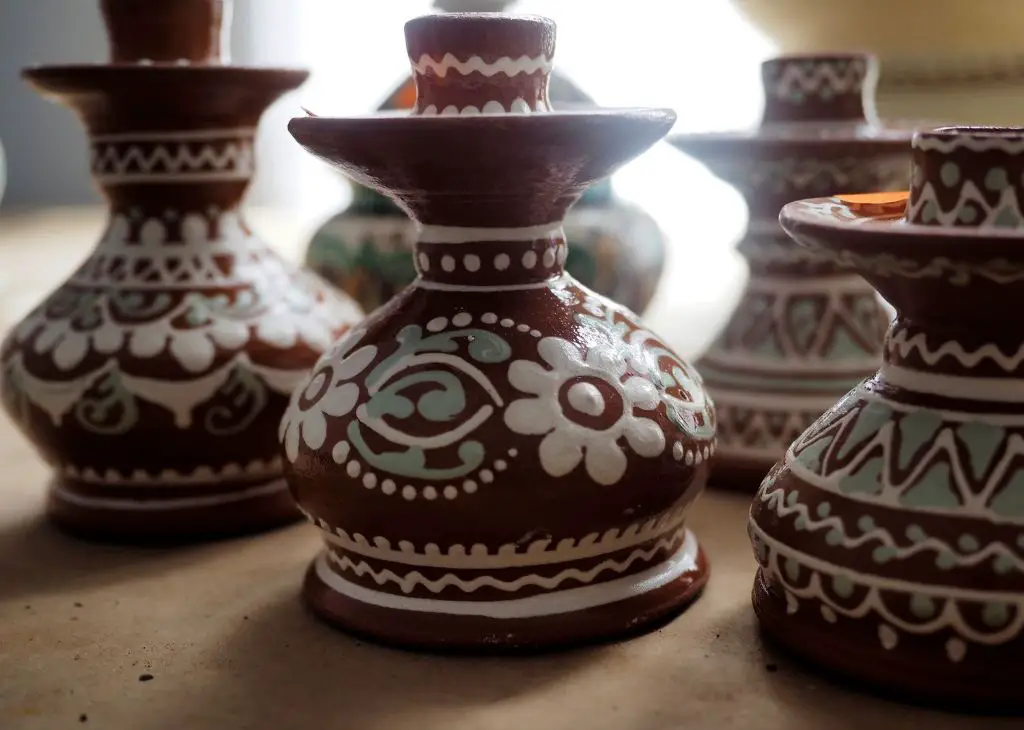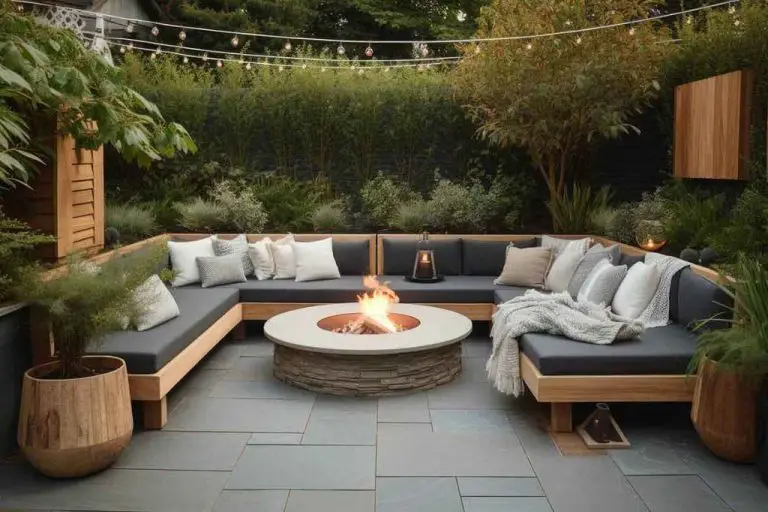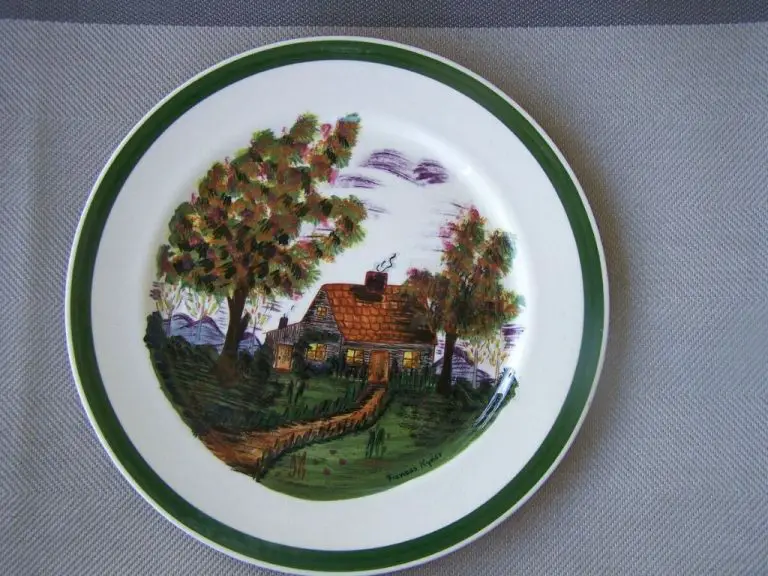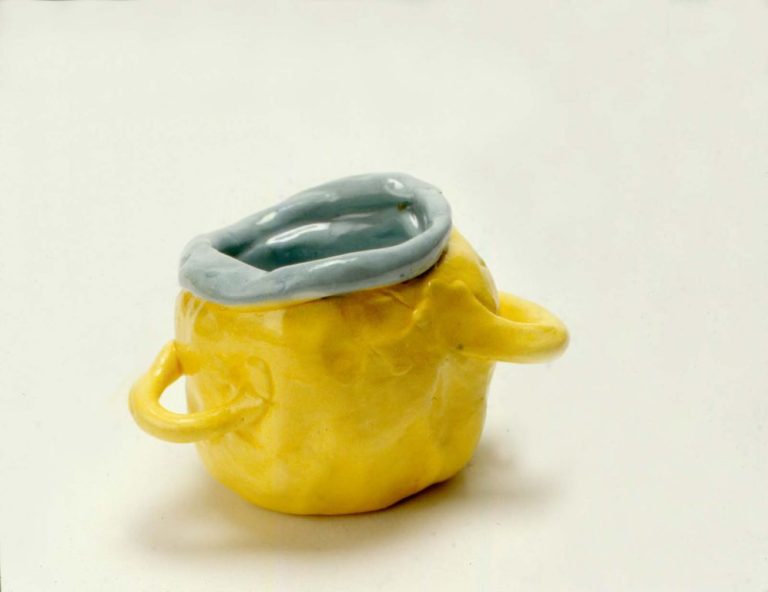What Is Painting On Pottery Called?
Pottery painting refers to the process of decorating ceramic wares like pots, plates, and vases using paint and glazes. Some of the most common pottery painting techniques include underglaze painting, overglaze painting, sgraffito, slip trailing, sponging, stippling, and more. Humans have been painting designs and patterns on pottery for thousands of years, dating back to ancient civilizations like Mesopotamia, Egypt, Greece, Rome, and China.
Painting on pottery allowed ancient cultures to add artistic designs, patterns, and imagery to functional ceramic objects. Over time, pottery painting techniques grew increasingly advanced as new methods were developed and refined. While the earliest pottery paintings were relatively simple, more complex techniques emerged that allowed for intricate details, shading, textures, and three-dimensional effects. From ancient times to today, pottery painting remains a beloved art form and craft for decorating ceramics.
History of Pottery Painting
The origins of pottery painting can be traced back over 12,000 years to the Jōmon period in ancient Japan, where potters began decorating early ceramic vessels with rope-patterned designs.1 In the Neolithic period, pottery painting emerged across cultures worldwide as a way to decorate functional earthenware pots and vessels. Early techniques included carving, incising, and impressing patterns into wet clay. Painted decoration using mineral pigments like red ochre also appeared on Greek, Minoan, Chinese, and Persian ceramics between 3,000-1,000 BC.2
The development of pottery glazes around 1500 BC provided durable, glossy surfaces ideal for painting. Glaze painting techniques like the sgraffito, slip trailing, stamping, and resist methods became popular across cultures. By 600 AD, overglaze painting on already fired and glazed ceramics was practiced in the Byzantine Empire and spread across the Islamic world, resulting in elaborate, multicolored designs.3 As trade expanded over land and sea, pottery painting techniques disseminated worldwide, developing localized styles and innovations.
Types of Pottery Painting
There are several common techniques used to paint designs on pottery and ceramics. Some of the most popular include:
Underglaze Painting
Underglaze paints are applied to bisqueware – pottery that has been fired once at a low temperature to harden it – before a glaze is added. The pigments soak into the porous bisque clay. Underglaze colors remain bright and vibrant even after firing, since the glaze over top seals in the color. Typical underglaze paints include underglaze pencils and underglaze washes or dyes. Underglazes can create fine details and crisp lines on pottery (Source).
Overglaze Painting
Overglaze paints are used to decorate pottery that has already been fired and glazed. The paint adheres to the glaze and gets a glass-like finish after a second firing. Overglazes come in various opacities and effects. Popular types include bright opaque colors, translucent stained glass effects, gold and silver metallic colors, and lusters which have a pearlescent sheen. Overglazes can provide colorful decoration on top of a glazed surface.
Sgraffito
Sgraffito involves scratching through one color of slip or underglaze to reveal a different color underneath. For example, a potter may apply a dark colored slip to leather-hard clay, let it dry, then coat on a lighter slip. Using metal tools, the potter etches designs to scratch away the top layer and uncover the darker clay below. Sgraffito reveals contrasting colors through carved lines and patterns.
Slip Trailing
With slip trailing, liquid clay slip is applied on top of a leather-hard clay surface by trailing it from a nozzle or other tool. The slip is often a contrasting color from the base clay. Designs like dots, lines, or brush strokes can create raised texture and color effects. Once the project is fired, the durable color decoration becomes an integral part of the pottery surface.
Underglaze Painting
Underglaze painting is a popular technique for decorating pottery. It involves applying specially formulated underglaze paints onto bisqueware – clay that has been fired once at a low temperature to harden it. Underglazes are opaque, colored paints that are applied before a final transparent glaze coating.
Underglazes are made from pigments suspended in a flux mixture. Common ingredients include silica, china clay, zinc oxide, and proprietary fluxes. Underglazes come ready to use in jars or bottles. Popular underglaze colors include blue, black, red, green, yellow, and brown.
The underglaze painting process starts with cleaning the bisqueware piece to remove any dust. Underglaze paint can then be applied directly onto the bisque using brushes, sponges, or other tools. Multiple layers and colors can be built up. The painted bisqueware is then fired to a high temperature, allowing the underglaze to mature and fuse with the clay body. A final transparent glaze is applied over the hardened underglaze. When fired again, the glaze melts to form a glossy coating.
Key advantages of underglaze painting include the ability to achieve crisp lines and intricate detailing. The colors are also very vibrant. Since underglazes are porous, layering and blending colors is easy. Mistakes can be corrected by simply wiping paint away before firing. Underglaze painting results in durable, high quality finishes.
Source: https://ratcitystudios.com/blog/2019/2/7/painting-with-underglazes
Overglaze Painting
Overglaze painting is a method of decorating already-glazed pottery by applying decoration over the fired glaze surface. The overglaze paints can be applied before or after the glaze firing. The paints contain metal oxides mixed with flux materials that melt upon firing, allowing the colors to fuse with the glaze surface. Common overglaze techniques include enamel painting, china painting, Majolica, and ceramic decals.
Overglaze paints contain flux materials like lead, borax, and quartz to help fuse the colors during firing. The paints use metal oxides to produce colors – common ingredients include cobalt (blue), copper (green, red), iron (brown, pink), manganese (purple), tin (white), and antimony (yellow). Gold, platinum, and silver metals are also used. The paints are applied to bisqueware or glazed surfaces and fired to about 1400°F to fuse the colors (1).
The process involves first applying a clear glaze over the bisqueware and firing at high temperatures around 2200°F. After the bisqueware has been glaze-fired, the overglaze paints are applied by brushing or painting the decorative designs. The piece is fired again around 1400°F to melt the paints and bond them to the glaze surface. The lower temperature preserves the glaze while fusing the overglaze. Multiple layers of overglaze can be applied to build up intricate designs.
Majolica is a common overglaze technique where thick opaque overglaze colors are brushed on top of an absorbed bisqueware surface. The colors have a rich matte finish. China painting uses thinner overglaze colors applied over glazed porcelain. The overglaze develops a bright glossy finish that fuses smoothly with the glaze (2).
Sgraffito
Sgraffito is an ancient decorating technique that involves scratching through a surface to reveal a lower layer of contrasting color underneath. The term comes from the Italian word “sgraffiare” meaning “to scratch.”
For sgraffito pottery, the materials used are:
- Clay pot or tile
- Slip (liquid clay mixture)
- Underglaze colors
- Carving tools – anything from sticks, pencils, needles to proper sgraffito tools
The sgraffito process involves:
- Applying a “base coat” of colored slip onto the pottery piece.
- Allowing it to dry.
- Applying one or more layers of contrasting colored slip on top.
- Letting the layers dry.
- Scratching through the layers with carving tools to reveal the base coat underneath.
This allows the potter to create intricate line designs by scratching through the layers. Frequently multiple layers are applied on top of each other to allow creating more complex motifs.
Slip Trailing
Slip trailing is a process of decorating pottery by trailing lines and patterns of liquid clay slip onto the surface of pottery. Slip is a mixture of clay and water with a thin yogurt-like consistency. Slip trailing involves using a bottle or a tool to apply the slip decoration.
The materials used for slip trailing include:
- Liquid clay slip – made from clay mixed with water to a creamy consistency.
- Bottles or slip trailing tools – used for applying the slip. Bottles come in various shapes with metal tips and allow detailed work. Slip trailing tools have reservoirs to hold slip and metal tips for trailing.
- Pottery piece – bisque fired and ready to be decorated.
The process of slip trailing involves:
- Preparing the slip and filling the bottles.
- Designing or planning out the slip trailing pattern.
- Holding the bottle or tool at an angle and trailing the slip onto the bisqueware surface to create lines and patterns.
- Allowing the slip decoration to dry.
- Firing the pottery again to harden the slip decoration.
Slip trailing allows creating delicate raised designs on pottery. The color of the slip contrasts with the base color of the clay body for a visually striking effect.

Other Techniques
In addition to the main pottery painting techniques like underglaze and overglaze, there are some other interesting techniques to explore:
Mishima involves using slip or engobe to draw fine lines on leather-hard clay, then scraping away the surface to reveal the underlying clay body. The lines create beautiful, subtle designs. This ancient Japanese technique requires great precision and a very steady hand. Sources: https://www.thesketchingpad.com/potterypainting.html, https://www.pinterest.com/potterypiazza/pottery-painting-tips-and-suggestions/
Terra Sigillata is a refined clay slip that can be brushed onto leather-hard clay to create a smooth, glossy surface. Multiple thin layers are applied and each is burnished. The technique enhances the natural color of the clay. Terra sigillata results in a surface reminiscent of polished marble. Sources: https://www.thesketchingpad.com/potterypainting.html, https://www.pinterest.com/potterypiazza/pottery-painting-tips-and-suggestions/
Textures can be impressed into the surface of leather-hard clay using a variety of tools and objects. Things like lace, burlap, leaves, seashells, forks, or anything with an interesting texture can be pressed into the clay to create patterns and designs. This adds visual interest to painted surfaces. Sources: https://www.thesketchingpad.com/potterypainting.html, https://www.pinterest.com/potterypiazza/pottery-painting-tips-and-suggestions/
Tips and Tricks
Painting pottery can be a fun hobby, but beginners often make mistakes. Here are some tips on best practices and common mistakes to avoid:
Best Practices
Prepare the bisqueware properly. Make sure the surface is smooth, clean and dry before starting. Lightly sand any rough areas and wipe off any dust with a lint-free cloth (Live Love Create).
Use quality paints designed for ceramics and pottery. Acrylic paints can chip or wear off. Purchase paint specifically made for firing/baking (Classpop).
Follow the manufacturer’s instructions on firing/baking to set the paint properly. Usually pieces need to be fired at 225-275°F.
Seal painted pieces with a glaze or sealer if they will be used with food or washed. This protects the paint from damage.
Work in a well-ventilated area and allow adequate drying time between coats.
Common Mistakes
Applying paint too thickly can lead to cracking or running during firing. Use multiple thin layers instead.
Don’t start with dark colors. Paint light colors first when doing multilayered designs. Dark paint is opaque and will block lighter colors.
Avoid getting impatient during the drying and curing process. Let each layer fully dry before adding another coat.
Don’t use paints not formulated for ceramics. Craft acrylics and even nail polish may not hold up during baking.
Make sure to smooth any drips or runs in the paint before baking. Imperfections will be permanent after firing.
Conclusion
In summary, pottery painting refers to the decoration of ceramic wares such as plates, mugs, vases, and figurines using paint. It is an ancient art form that continues to be popular today. There are several techniques for painting on pottery, including underglaze, overglaze, sgraffito, and slip trailing.
Pottery painting provides many benefits. It is a relaxing, therapeutic hobby that can reduce stress. The creative process helps improve focus and concentration. Painting pottery also develops fine motor skills and hand-eye coordination. For children, it builds confidence as they create their own unique works of art.
Throughout history, pottery painting has allowed people to add beauty and meaning to everyday functional objects. It continues to be an enjoyable way to express creativity, make thoughtful gifts, and appreciate the artistry involved in crafting pottery.



